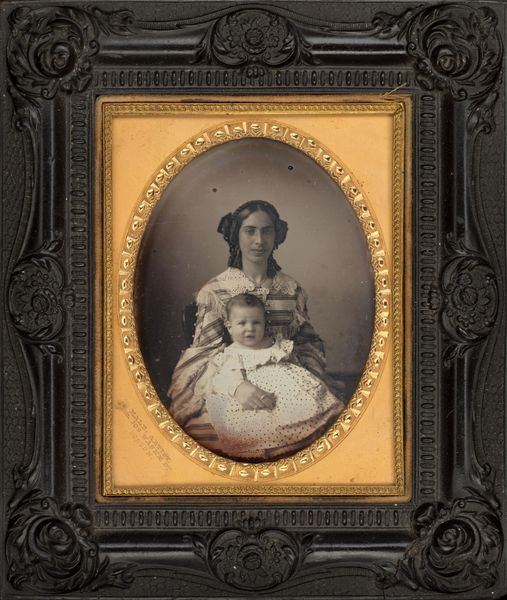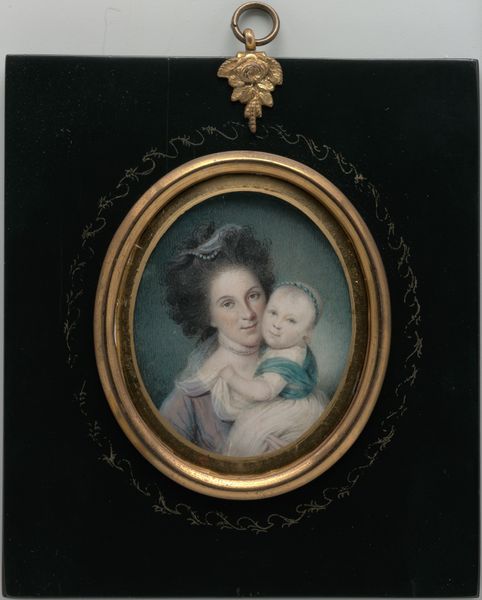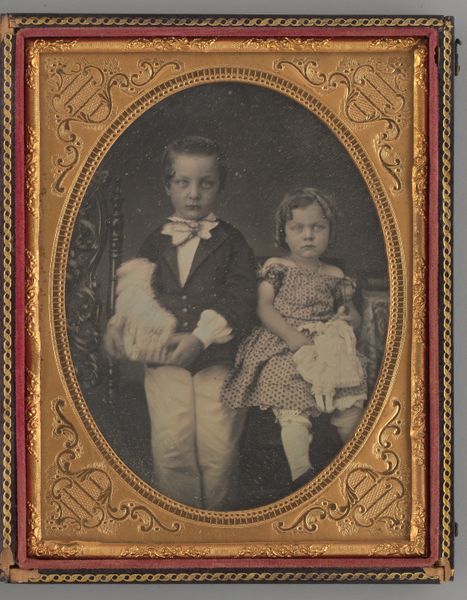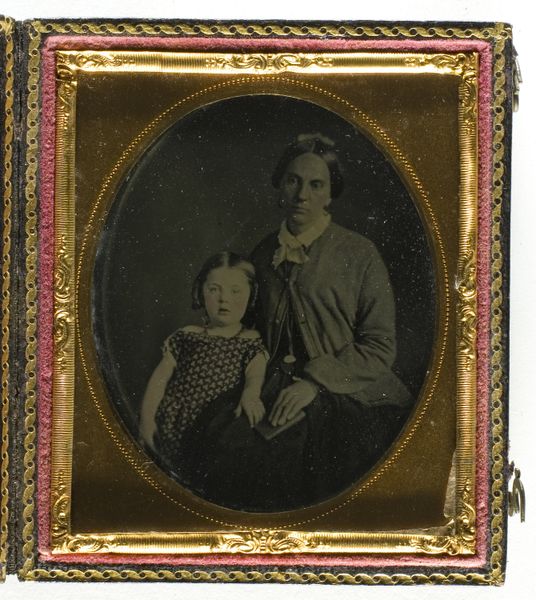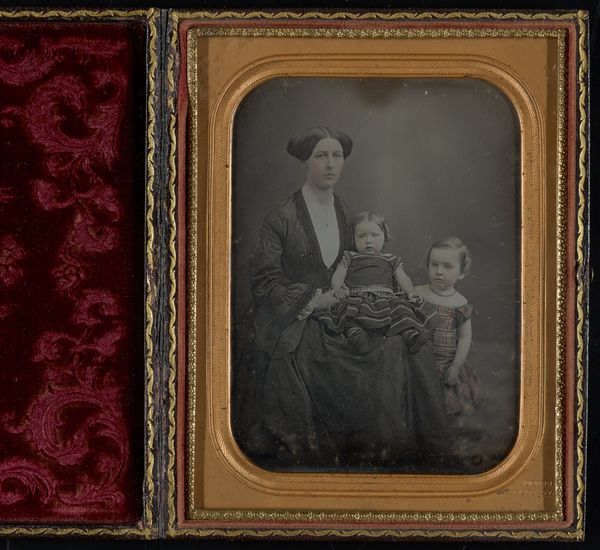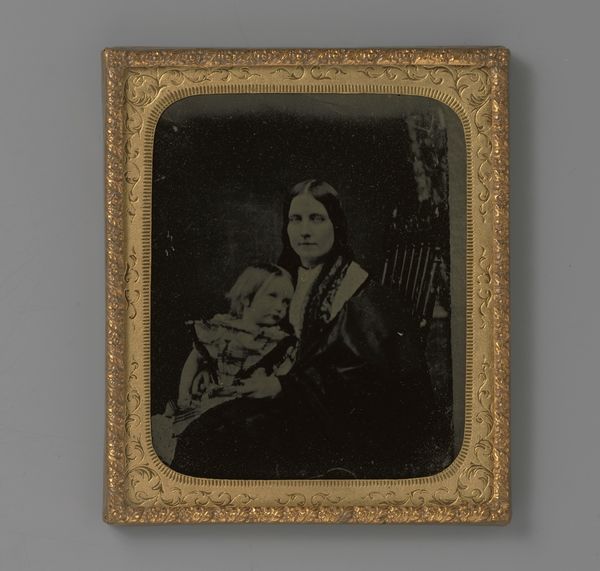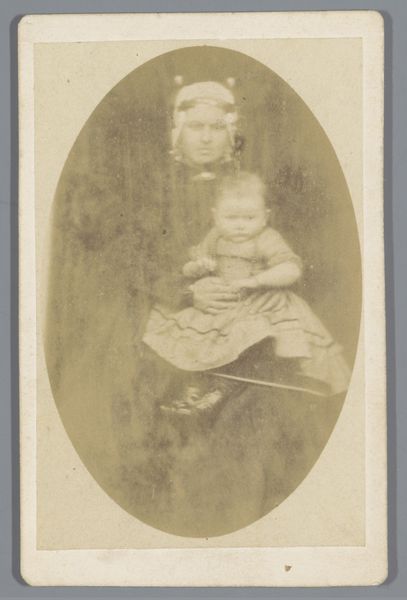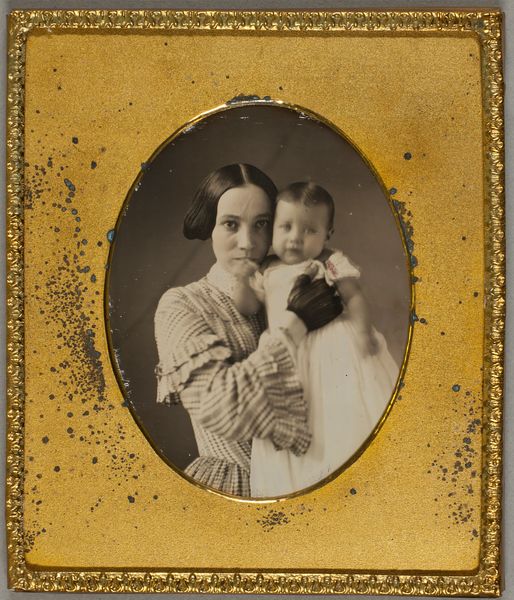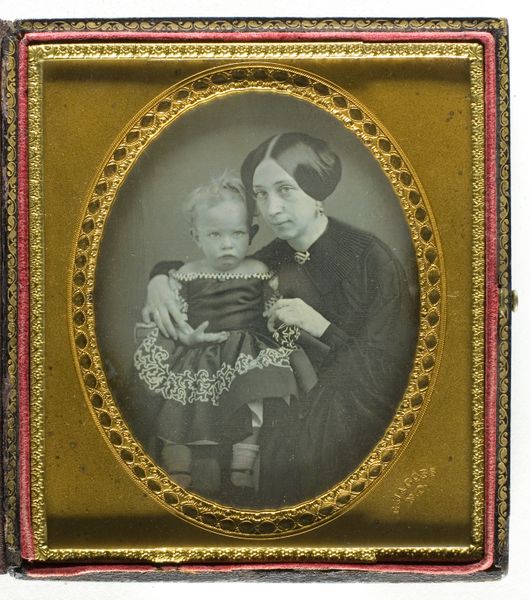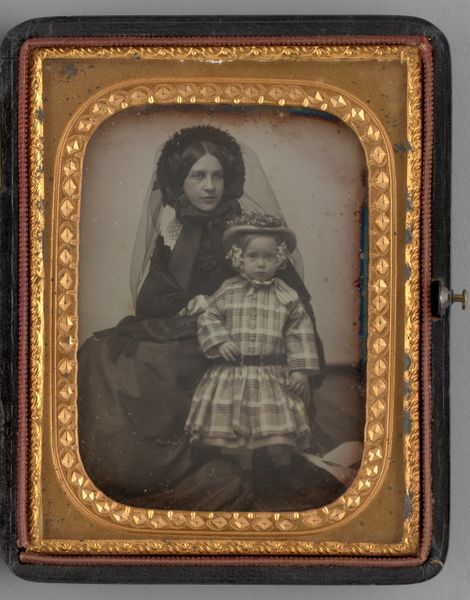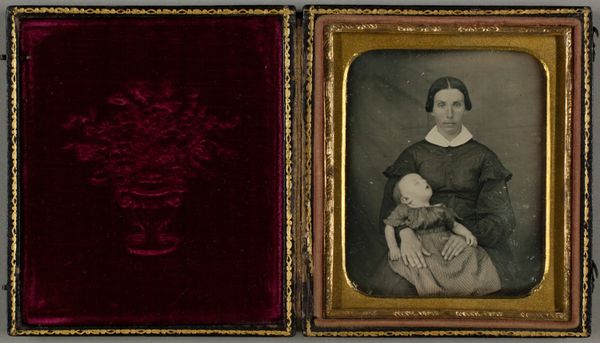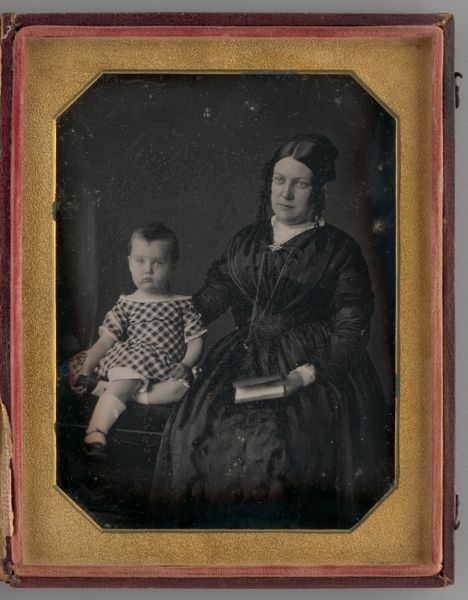
Dimensions: image (visible): 6.6 × 5.4 cm (2 5/8 × 2 1/8 in.) mat: 8.1 × 6.9 cm (3 3/16 × 2 11/16 in.) case (closed): 9.4 × 8.2 × 1.5 cm (3 11/16 × 3 1/4 × 9/16 in.)
Copyright: National Gallery of Art: CC0 1.0
Charles H. Williamson made this portrait of a woman and baby using the daguerreotype process. This photographic technique involves creating a highly detailed image on a silvered copper plate. The reflective, almost mirror-like surface is quite unique. Note how the quality of the image depends so much on light and viewing angle. This wasn't just a matter of pointing and shooting; it required careful surface preparation, chemical treatments, and precise timing. Every step demanded skill and care, making each daguerreotype a unique object. Photography in this era was a fairly new medium, but was already changing portraiture. The rise of photography democratized image-making, as it offered a relatively affordable way for people to have their likeness captured. The daguerreotype was also a valuable commodity, and its encasement suggests its status as a precious, personal keepsake, and a beautiful synthesis of art, craft, and chemistry.
Comments
No comments
Be the first to comment and join the conversation on the ultimate creative platform.
